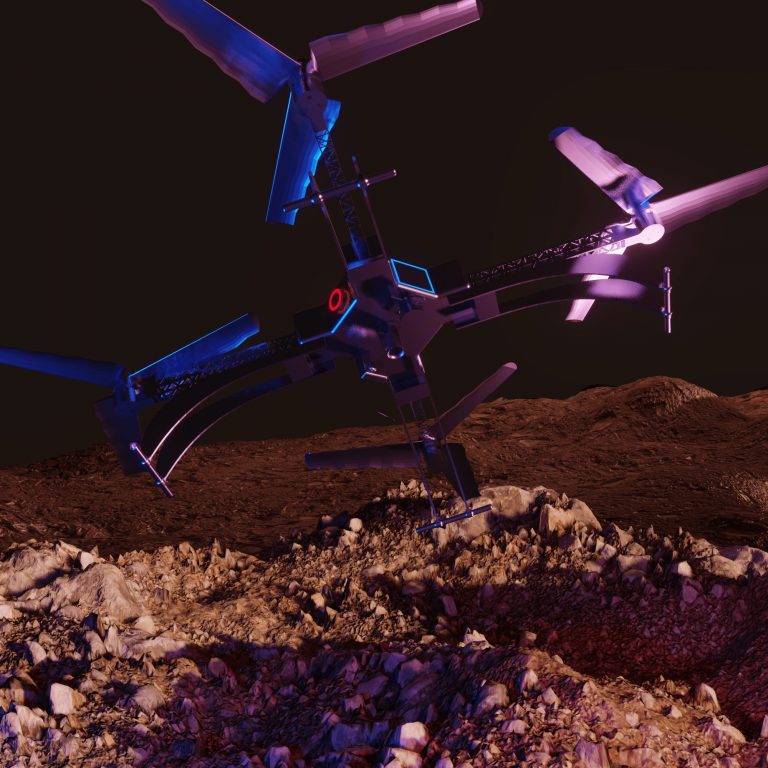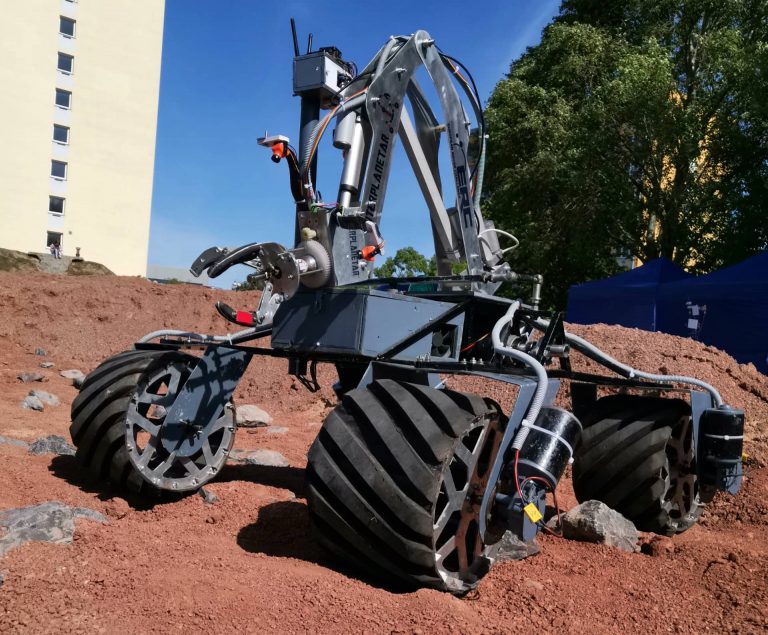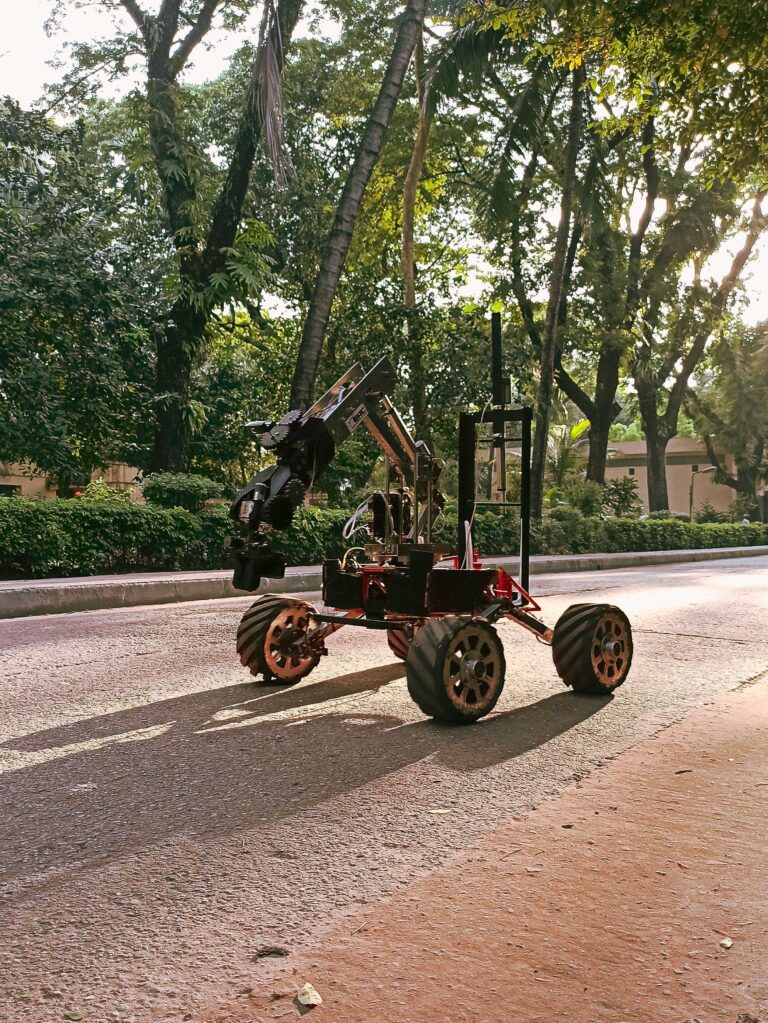With the lessons from our previous endeavors in mind, we set out to build Mongol-E v 4.0 for the ERC 2019 to be our best-performing rover to date.
Our team was divided into five subgroups – mechanical, electrical, communication, AI, and Science tasks.
The manipulator of the rover has 6 degrees of freedom with infinite rotation of the end effector. It has been tested to lift weights up to seven kg. We have strived to make the arm as precise as possible and the arm has been able to perform various tasks, such as turning a crank, opening a latch, turning a switch, opening a drawer, pressing a mechanical keyboard precisely, operating a joystick, and turning a knob- all has been done using inverse kinematics.
We designed the suspension in SolidWorks and conducted intense stress analysis prior to fabrication. We employed a counter-linked mechanism for the suspension so that the rover can overcome every obstacle in the mars yard.
As we strived for improvement, we redesigned our wheels from the previous ones for proper traction and strength of the wheel. We used 6061 aluminum alloy for the wheel structure, which has greater strength but is lightweight and portable at the same time.
We modeled our science task equipment for on-board testing and analysis of soil samples, determining the availability of various nutrients like nitrogen, phosphorus, potassium, and microorganisms in the soil. An auger drill collects the soil samples and the soil temperature sensor, moisture sensor, and digital microscope simultaneously collect and analyze soil characteristics and grain structure. Gas. humidity and UV sensors are mounted on the rover to determine the atmospheric conditions of a specific site and send the data to the base station.





